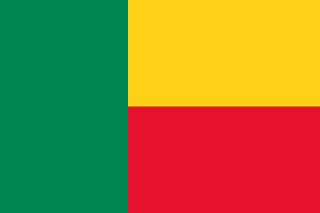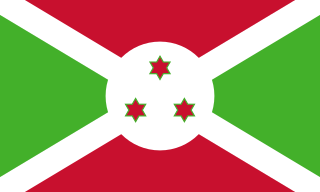This article does not cite any sources .(June 2009) (Learn how and when to remove this template message) |
Media in Botswana is controlled by the government.
This article does not cite any sources .(June 2009) (Learn how and when to remove this template message) |
Media in Botswana is controlled by the government.
In 2003, there were an estimated 76 mainline telephones for every 1,000 people. The same year, there were approximately 297 mobile phones in use for every 1,000 people.[ citation needed ]

The government controls the content of nearly all radio and television broadcasts through the Botswana Press Agency (BOPA), which produces the free Daily News newspaper, Radio Botswana and Radio Botswana 2 (which broadcast nationally to most of the country), and Botswana Television (BTV). Radio Botswana broadcasts, in English and Setswana, a variety of news, educational, cultural, and entertainment programs. In 2004, there were two private radio stations, Yarona FM and Gabz FM, broadcasting in 5 of the country's 10 largest towns. The privately owned Gaborone Broadcasting Company (GBC) is the only other television station in the country; it broadcasts mostly foreign programming.
In 2003, there were an estimated 150 radios and 44 television sets for every 1,000 people. The same year, there were 40.7 personal computers for every 1,000 people and 35 of every 1,000 people had access to the Internet. There was one secure Internet server in the country in 2004.
There is one daily newspapers in Botswana, the government published Dikgang Tsa Gompieno (or DailyNews, circulation 80,000) [1] in both English and Setswana. The government also publishes, in a bilingual edition, the monthly magazine Kutlwano Magazine (circulation 25,000). In 2002, 4 independent newspapers were publishing on a weekly basis, with a total circulation of over 50,000. Mmegi, or The Reporter, is published in both Setswana and English with a weekly circulation of 24,000.[ citation needed ]
The Constitution of Botswana ensures a free press and free speech, and the government is said to highly respect these rights.[ citation needed ]
Botswana include newspapers, radio, television, fixed and mobile telephones, and the Internet.
The media of Belarus are mass-media outlets based in Belarus. Television, magazines, and newspapers are operated by state-owned and for-profit corporations and depend on advertising, subscriptions, and other sales-related revenue. The Constitution of Belarus guarantees freedom of speech, but this is contradicted in practice by repressive and restrictive laws. Arbitrary detention, arrests, and harassment of journalists are frequent in Belarus. Anti-extremism legislation targets independent journalism, including material considered unfavourable to the president.
Media of the United States consist of several different types of media: television, radio, cinema, newspapers, magazines, and Internet-based web sites. The U.S. also has a strong music industry. Many of the media are controlled by large for-profit corporations who reap revenue from advertising, subscriptions, and sale of copyrighted material. American media conglomerates tend to be leading global players, generating large revenues as well as large opposition in many parts of the world. With the passage of the Telecommunications Act of 1996, further deregulation and convergence are under way, leading to mega-mergers, further concentration of media ownership, and the emergence of multinational media conglomerates. These mergers enable tighter control of information. Currently, five corporations control roughly 90% of the media. Critics allege that localism, local news and other content at the community level, media spending and coverage of news, and diversity of ownership and views have suffered as a result of these processes of media concentration.

The media of South Africa has a large mass media sector and is one of Africa's major media centres. While South Africa's many broadcasters and publications reflect the diversity of the population as a whole, the most commonly used language is English. However, all ten other official languages are represented to some extent or another. Afrikaans is the second most commonly used language, especially in the publishing sector.
Thailand has a well-developed media sector, especially by Southeast Asian standards. The Thai government and the military have long exercised considerable control, especially over radio and TV stations. During the governments of Thaksin Shinawatra, the subsequent military-run administration after the 2006 coup and military coup of 2014, the media in Thailand—both domestic and foreign—have suffered from increasing restrictions and censorship, sometimes subtle, sometimes overt.
Sudan has many local and national newspapers. The major national dailies are published in Arabic or English. Sudan Television broadcasts sixty hours of programming a week. The Sudan National Broadcasting Corporation airs radio programming in Arabic, English, French, and Swahili. Radio and television stations are state-controlled entities and serve as outlets for the government viewpoint. Journalists and the papers they serve, although subject to government censorship, operate with more freedom and independence than in most neighboring countries or Arab states. The Voice of Sudan, sponsored by the National Democratic Alliance, broadcasts in Arabic and English. The opposition Sudan People's Liberation Army issues its own newspapers and journals.
The South Korean media consist of several different types of public communication of news: television, radio, cinema, newspapers, magazines, and Internet-based websites.

The media of Indonesia consist of several different types of communications media: television, radio, cinema, newspapers, magazines, and Internet-based Web sites.

Media in Sierra Leone began when the first modern printing press in Africa arrived at the start of the 19th century. In the 1860s the country became a journalist hub for Africa with professional travelling to the country from across the continent. At the end of the 19th century the industry went into decline and when radio was introduced in the 1930s this became the primary communication media. Print media is not widely read in Sierra Leone, especially outside Freetown, partially due to the low levels of literacy in the country. In 2008 there were 15 daily newspapers in addition to those published weekly. Among newspaper readership young people are likely to read newspapers weekly and older people daily. The majority of newspapers are privately run and are often critical of the government.
Media in Colombia refers to media available in Colombia consisting of several different types of communications media: television, radio, cinema, newspapers, magazines, and Internet-based Web sites. Colombia also has a national music industry.
The media in Iceland are well-developed for a country of its size. The Constitution of Iceland guarantees absolute freedom of speech. Therefore, Iceland’s media are among the freest in the world.
The print, broadcast and online media of Burma has undergone strict censorship and regulation since the 1962 Burmese coup d'état. The constitution provides for freedom of speech and the press; however, the government prohibits the exercise of these rights in practice. Reporters Without Borders ranked Burma 174th out of 178 in its 2010 Press Freedom Index, ahead of just Iran, Turkmenistan, North Korea, and Eritrea. In 2015, Burma moved up to 144th place, ahead of many of its ASEAN neighbours such as Singapore, as a result of political changes in the country.

The media of Mongolia refers to the print, broadcast and online media in Mongolia. Since the collapse of the Soviet style system in 1990, the media has undergone large reforms which have allowed greater diversity and freedom of the press which make it one of the most free in the region. Censorship of media outlets is forbidden under the 1998 Media Freedom Law. In its 2013 report, Reporters Without Borders classified the media environment as 98th out of 179, with 1st being most free.
The Media in Angola is primarily controlled by Angola's dominant political party, the People's Movement for the Liberation of Angola (MPLA), led by José Eduardo dos Santos, the country's president.

Media in Benin was formerly controlled by the government but there has been a loosening of control since the introduction of democracy to the country in the 1990s.

Media in Burundi is controlled by the government.
Media of the Central Africa is controlled by the government.
Media in Ivory Coast is controlled by the government. Audiovisual communications are regulated by the Conseil national de la communication audiovisuelle (CNCA), an administrative arm of the national government.
The media of Gabon is primarily monitored by the Gabon government. Although the main newspapers are associated with the government, there are private broadcasters, and private weekly newspapers that are mostly controlled by opposition parties.

The media in Uganda includes print, television, radio and online sectors, and coverage is split between both state-run outlets and privately held outlets as well as English-language outlets and Luganda-language outlets.
| This Botswana-related article is a stub. You can help Wikipedia by expanding it. |